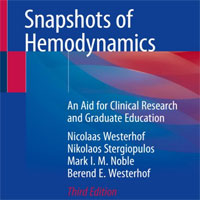Tag: hemodynamics
Effect of Single-Dose Dexmedetomidine on Intraoperative Hemodynamics and Postoperative Recovery during Pediatric Adenotonsillectomy
Premedication of dexmedetomidine at the dose of 1 μg/kg in children undergoing adenotonsillectomy resulted in favorable effect on intraoperative hemodynamics, significant decrease in postoperative EA without causing any... read more
Study of the Effects of Epinephrine on Cerebral Oxygenation and Metabolism During Cardiac Arrest and Resuscitation by Hyperspectral Near-Infrared Spectroscopy
Epinephrine administration by bolus resulted in transient improvements in cerebral oxygenation and metabolism, whereas continuous epinephrine infusion did not, compared with placebo. Future studies are needed to evaluate... read more
Hypotensive Response to IV Acetaminophen in Pediatric Cardiac Patients
In isolation of other medication, a hemodynamic response to IV acetaminophen has a higher prevalence in critically ill children with cardiac disease than previously thought and justifies controlled studies in the perioperative... read more
Validation and Critical Evaluation of the Effective Arterial Elastance in Critically Ill Patients
In critically ill patients, effective arterial elastance may be reliably estimated at bedside. We support the use of this validated estimate of effective arterial elastance when coupled with an index of left ventricular contractility... read more
Artificial Liver Support in Acute and Acute-on-Chronic Liver Failure
Liver support systems such as MARS and TPE may temporarily improve systemic hemodynamics and the degree of encephalopathy. However, TPE is the only procedure that improves survival in patients with ALF. The role of TPE in... read more
A Trial of Goal-oriented Hemodynamic Therapy in Critically Ill Patients
Hemodynamic therapy aimed at achieving supranormal values for the cardiac index or normal values for mixed venous oxygen saturation does not reduce morbidity or mortality among critically ill patients. A total of 10,726 patients... read more
Angiotensin II For Septic Shock Treatment
Angiotensin II has been studied for many years and has consistently shown to increase MAP. This medication adds a new mechanism of action to the vasopressor arsenal that is already used for septic shock. Angiotensin II should... read more
Lactate-Guided Resuscitation Only Encourages Over-Resuscitation and Downstream Harms
The Centers for Medicare and Medicaid Services and the Surviving Sepsis Campaign both rushed to offer guidance on the appropriate management strategies for patients presenting with septic shock. In both cases, a lactate-guided... read more
A Pilot Study Evaluating the Effect of Cooler Dialysate Temperature on Hemodynamic Stability During Prolonged Intermittent RRT in AKI
Acute kidney injury (AKI) requiring renal replacement therapy (RRT) is associated with high morbidity and mortality. Complications of renal replacement therapy include hemodynamic instability with ensuing shortened treatments,... read more
Snapshots of Hemodynamics: An Aid for Clinical Research and Graduate Education
This new edition reviews recent developments in genetics and molecular biology and new noninvasive measurement techniques that have enabled vast improvements in the measurement and understanding of cardiovascular hemodynamics.... read more

Determination of Brain Death Under Extracorporeal Life Support
The worldwide use of extracorporeal lung/life support is increasing in severe lung failure (veno-venous extracorporeal membrane oxygenation, vvECMO) or in cardiac arrest/severe circulatory failure (veno-arterial ECMO, vaECMO).... read more
Early or Delayed Cardioversion in Recent-Onset Atrial Fibrillation
In patients presenting to the emergency department with recent-onset, symptomatic atrial fibrillation, a wait-and-see approach was noninferior to early cardioversion in achieving a return to sinus rhythm at 4 weeks. The presence... read more
Mythbuster: Administration of Vasopressors Through Peripheral Intravenous Access
Vasopressors are frequently used in critically ill patients with hemodynamic instability both in the emergency department (ED) as well as intensive care units (ICUs). Typically, vasopressors are given through central venous... read more
Should We Stop Trending Lactate in Septic Shock?
There may be a tendency to cement guideline recommendations into our collective minds as inalienable and sacrosanct – as if carved onto stone tablets and brought down to us from the heights of Mount Sinai. Thoughtful medicine,... read more
Optimizing Hemodynamic Support in Severe Sepsis and Septic Shock, An Issue of Critical Care Clinics
Guest Editor Dane Nichols, MD, has assembled a panel of experts focusing on Hemodynamic Support in Septic Shock. Topics include: Oxygen Delivery and Consumption: A Macro-Circulatory Perspective; Mean Arterial Pressure: Therapeutic... read more

Medicating patients during extracorporeal membrane oxygenation
Extracorporeal membrane oxygenation (ECMO), which can support gas exchange or hemodynamics in patients with severe respiratory or cardiac failure, has demonstrated considerable evolution over the last decade [1], with a steady... read more
Hemodynamic Support after Cardiac Surgery
Low cardiac output syndrome is a common complication of cardiac surgery and is associated with increased mortality. Levosimendan has been shown in small studies to be an effective therapy.... read more
Unintended Consequences: Fluid Resuscitation Worsens Shock in an Ovine Model of Endotoxemia
Fluid resuscitation resulted in a paradoxical increase in vasopressor requirement. Additionally, it did not result in improvements in any of the measured microcirculatory- or organ-specific markers measured. The increase... read more
Less or More Hemodynamic Monitoring in Critically Ill Patients
The use of echocardiography should be initially encouraged in patients with shock to identify the type of shock and to select the most appropriate therapy. The use of more invasive hemodynamic monitoring techniques should... read more
The Shocked Intubation: Definitive Airway Sans Hypotension
Not many aspects of Emergency Medicine define our specialty better than resuscitation, and few concepts exemplify resuscitation better than shock and intubation. Yet few words together strike greater fear in the minds of... read more
Predicting the Haemodynamic Response to Prone Positioning
A Novel and Simultaneous Analysis of the Guyton and Rahn Diagrams. Graphical models of physiology are heuristically appealing as they facilitate qualitative conclusions at the bedside of the critically ill. Historically,... read more
Fluid Responsiveness in a Hemodynamically Unstable Patient
Only half of patients who are hemodynamically unstable will respond to a fluid bolus. There are no historical or physical examination findings that can help us decide whether a patient is a fluid responder, but we must treat... read more









